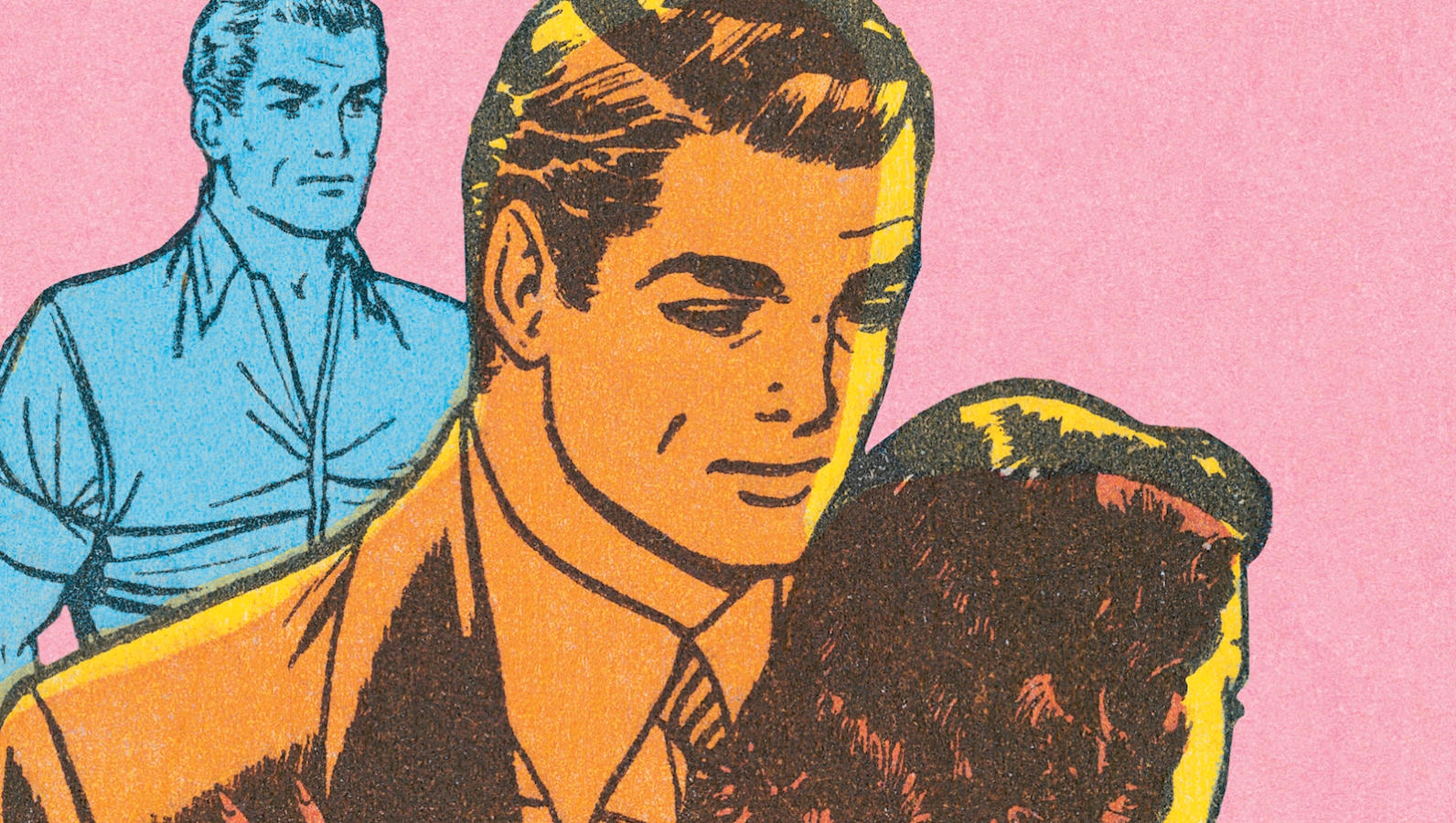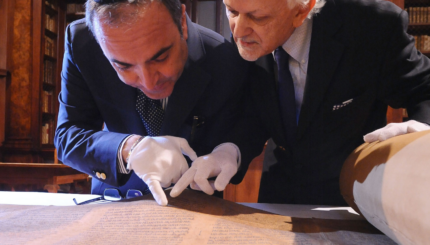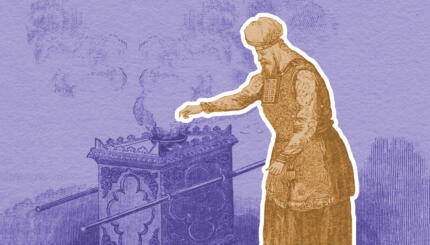Commentary on Parashat Nasso, Numbers 4:21-7:89
The sotah ritual (Numbers 5:11-31), in which a man suspects his wife of adultery and subjects her to an ordeal, has been notoriously difficult for contemporary readers, especially from a feminist perspective. The unequal application of the ritual to women and not men, the lack of due process, the physical and emotional humiliation — all of these combine to make this passage a challenging place in which to find meaning. As such, this passage keeps company with a number of other biblical texts that are problematic, even painful, to read.
Rabbi Rebecca Alpert offers a valuable model for confronting such troubling teachings. In her book Like Bread on a Seder Plate: Jewish Lesbians and the Transformation of Tradition (1997), Alpert presents a number of approaches for dealing with traditional texts on homosexuality. She suggests that we can understand these texts by interpreting them in the context of their own time and place. We also can try to wrest new meaning from them, or we can simply acknowledge the pain that they have caused — and continue to cause. These approaches are not, of course, mutually exclusive, and they can apply also to this portion.
Taking the Ritual in Context
Certainly in the case of the sotah, we can analyze it in light of its historical context. Comparing this passage with other ancient Near Eastern texts reveals it to be in keeping with other laws contemporary to Torah times.
In terms of the pain the passage has caused, we can easily imagine its effect on women thousands of years ago, but we ourselves are spared direct impact. Modern readers have long taken solace in the fact that this practice is no longer in force — and thus is far from the purview of synagogue ritual committees. In fact, it is unclear whether this ritual ever took place. Even in the Torah, the law is given without a connection to any particular incident. The Mishnah states that an early rabbinic leader discontinued the ritual of the sotah (Sotah 9:9). The entire body of rabbinic literature cites only one example of its implementation.

Help us keep Jewish knowledge accessible to millions of people around the world.
Your donation to My Jewish Learning fuels endless journeys of Jewish discovery. With your help, My Jewish Learning can continue to provide nonstop opportunities for learning, connection and growth.
Regarding the medieval period, a little-known fragment from the Cairo Geniza still gives instructions as to how to perform the ritual in one’s neighborhood synagogue; but there too, no record has been found of anyone actually doing so. (For details, see Lisa Grushcow, Writing the Wayward Wife: Rabbinic Interpretations of Sotah, 2006, pp. 297-300.)
When we try to understand the sotah ritual in context, we can be relieved that it has not been implemented for at least 2,000 years. But how can we wrest meaning from this difficult text? Interestingly, the very discontinuation of the ritual — and the rabbinic explanation of its abandonment — may give us a way to find meaning. The official suspension of the sotah ritual provides an example of how religious and legal change happens, and how such change is explained. For those of us who are committed to the Torah and also see Judaism as a path that embraces change, this is a crucial issue.
How the Ritual Disappeared
Some modern scholars assume that the ritual of the sotah disappeared because of the destruction of the Temple. Others argue that the ritual was abolished as a bold rabbinic move, to remove a practice that was seen to be unfair. But when one looks closely at the rabbinic texts, neither of these reasons is found.
Rather, the explanation given is that things were getting worse — either more people were openly committing adultery, or more husbands were sinning in such a way that the sotah ritual did not then work on their wives. The Rabbis account for these and other examples of decline by claiming that the deaths of certain sages led to the disappearance of certain qualities from the world (see for example, Sotah 9:9).
Thus, in these rabbinic texts, change results from a world that is getting worse. It is also worth noting that we find a similar outlook in the Greco-Roman world that surrounded the ancient rabbis. From that perspective, religious and legal changes were a response to moral, sexual, intellectual, or political collapse.
Making Change Positive
Coming back to the sotah ritual, then, it seems that our ancestors did not abolish the ritual because they found it morally objectionable. Instead, they used the best conceptual tools of their time to make sense of why change had happened, and those tools explained change as the product of decline.
Our modern paradigm, in contrast, is fundamentally based on the assumptions of science, the Enlightenment, and Emancipation: We believe that it is possible for humanity to make changes based on progress, not decline. The optimism of the Enlightenment has been tempered by the Holocaust and other tragedies of modern times, but the fundamental shift remains. For us, change can be positive, even holy. We believe that God continues to speak to us. Living in accordance with our new understandings of gender and sexual identity has enriched our clergy and communities.
Living in a world more openly diverse has taught us the importance of outreach and inreach for our communities, in all their diversity. Scientific insights spur us to find new ethical and spiritual answers to questions of life and death. The existence of the modern state of Israel challenges us to live richer Jewish lives, wherever we are in the world. These changes and others are celebrated, not lamented as evidence of decline.
Ultimately, then, the sotah ritual is most powerful as a teacher of change: how we understood change in the past, and how we might understand it now. Just as the Rabbis of the Mishnah and used the best conceptual tools of their time to understand change, so must we — with the tools of our own time. Such an approach is not abandoning our tradition; it is being true to it.
The end of the Babylonian Talmud‘s tractate on sotah gives us a glimmer of possibility: some of our ancestors might also have had a different perspective on change and decline. Mishnah Sotah 9:9 ends with the statement that with the death of Rabbi Judah haNasi (Judah the Prince), humility and the fear of sin disappeared. In the Talmud’s commentary, this statement is challenged. “Do not teach that humility is gone,” says Rav Joseph, “for I am still here!” “Do not teach that the fear of sin is gone,” says Rav Nachman, “for I am still here!” (BT Sotah 49b). Rav Nachman’s self-proclaimed fear of sin — not to mention Rav Joseph’s self-proclaimed humility — suggests that our ancestors, like ourselves, thought that they still had something to add.
Reprinted with permission from The Torah: A Women’s Commentary, edited by Tamara Cohn Eskenazi and Andrea L. Weiss (New York: URJ Press and Women of Reform Judaism, 2008).




